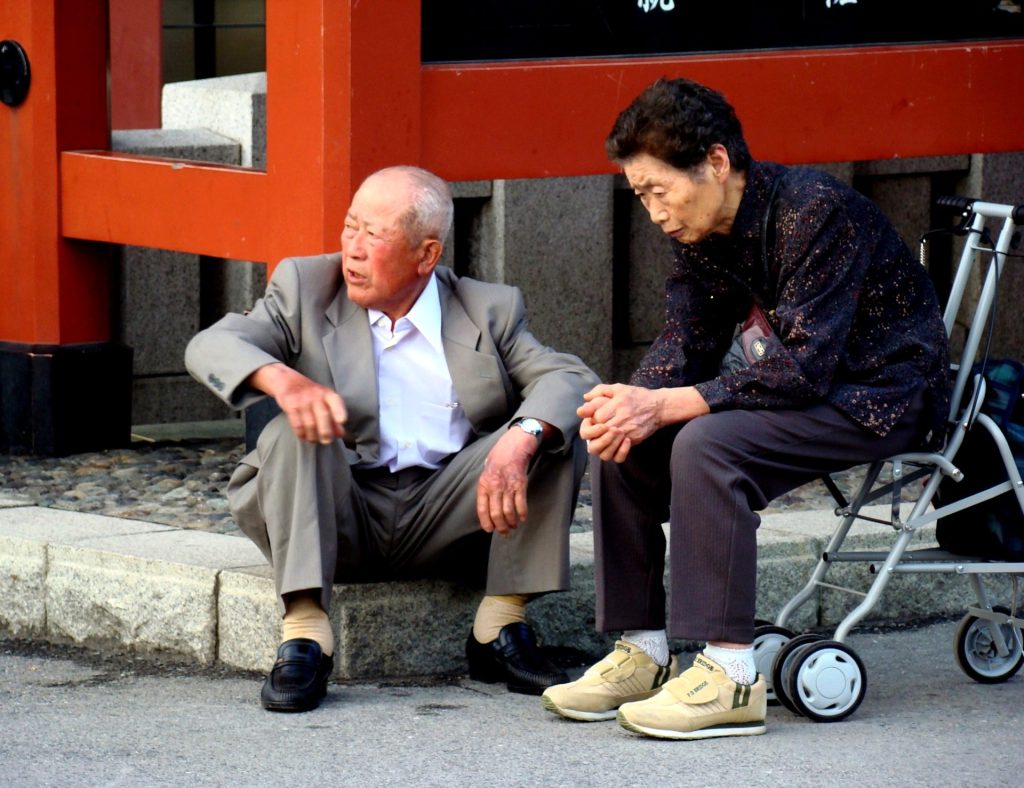
O Estadão recently published an article entitled “Japan invests in “nice” robots to make deliveries”, referring to a traffic law that comes into force in April of this year authorizing the circulation of autonomous “delivery” robots,. Its creators, the robotics company ZMP, are confident that they will help, for example, in the provision of services to the elderly, especially in sparsely populated rural areas. They warn that they will be monitored by remote control and by people who can intervene if necessary. The ZMP considered it important that they be “humble and charming, to inspire confidence”… The company has already gone out into the field and partnered with business giants, como a “Japan Post Holdings”, who will test these robots in Tokyo.
This makes us reflect on the question of the aging of the Japanese population. – and worldwide – and the insertion of robotics in our daily lives…
We all know that Japan is already the “oldest” country on the planet: more of 29% of its inhabitants has 65 years, or more (in Italy, the second most “senior” nation, the number is 23%). This is largely due to the fact that the population born shortly after World War II, the Japanese “baby-boomers” – a mass of about eight million individuals born between 1947 e 1949 – will be completing 75 years already next year. currently, more of 29% of the population has 65 years or more.
Thus, the country is at the forefront of tackling the demographic challenges that many rich countries already face. In an interview with “The Economist”, Shinzo Abe, the former prime minister tragically killed last year, stated that the population is declining and aging at a “unprecedented speed”. The fertility rate – the number of children the average woman will have in her lifetime – is 1 son only, while there are about 400.000 more deaths than births each year. Life expectancy is 84 years, the highest in the world. According to the calculations of experts, more than half of babies born in Japan today can hope to live to 100 years.
The increase in this life expectancy is good news, of course. But aging and declining populations create new problems.. Among them: to begin, Japan has a severe labor shortage. currently exists 1,6 vacancies for every job seeker. And the ratio of retired seniors to active young people is rising rapidly.. In consequence, people are increasingly turning to public funds, namely through pensions and health insurance, making the social security framework unsustainable. The public debt is 250% of GDP and the government calculates that by 2040 population welfare costs will have increased from the current ¥ 121 trillions (US $ 1,06 trillion) for ¥ 190 trillion per year.
A pandemic of Covid 19, differently than expected, was especially harmful for the conception of babies. In 2020, Japan only recorded 841.000 births, lowest number since records began. And the population was reduced by 532.000 of individuals, biggest decline ever. concurrently, the number of marriages decreased in 12%. As the population continues to age, younger adults are becoming relatively even younger. To compensate for the vacuum being created, the legal age of majority will fall from 20 for 18 years from april, pursuant to an amendment to the Civil Code approved in 2018. This will give approx. 2 millions of “new adults” overnight, to cover the social security vacuum created by the elderly. It is the first change of this kind since the legal concept of “adult”” was established in 1876.
This demographic shift reflects two factors that are often intertwined.: increased longevity and falling birth rate. This convergence requires “a new map of life”, diz Akiyama Hiroko, founder of the Institute of Gerontology at the University of Tokyo. According to him, the infrastructure framework that was created when the population was younger must be redesigned, from healthcare to housing and transport. The new reality demands a “completely different way of thinking”, diz Kashiwa Kazuyori, head of the urban planning department of the Gojome region, in the north of Kyushu Island. According to him, when you started working, in the decade 1970, the focus was on growth. Now it's about managing the decline.
It is in this scenario that robotics gains increasing – and doubtful –, for its critics – spaces in the country. It is at the forefront of technological research: Japan leads the world in this field, segundo a “University of Tokyo School of Engineering”. More progress is being made in this area so that Japan can become the generator of new value in manufactured goods and services., among them the basis for the creation of robots that will contribute to the transformation of society (?). For so much, research institutions, corporations and similar entities collaborate with each other to implement the advancement of robot technology in Japan in a wide variety of areas.
The frontier of ethics remains; that is, the limits that humanity must impose between what is scientifically and technically feasible and the common good…The question remains: in the face of the possibly irreversible scenario of depopulation, can – or should – the Japanese (or any other community) subjecting human relations to the tyranny of instruments and machines, to the point of dehumanizing them in the name of social interaction?
difficult dilemma…
